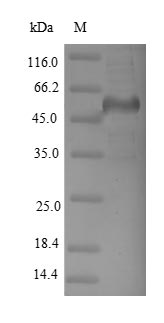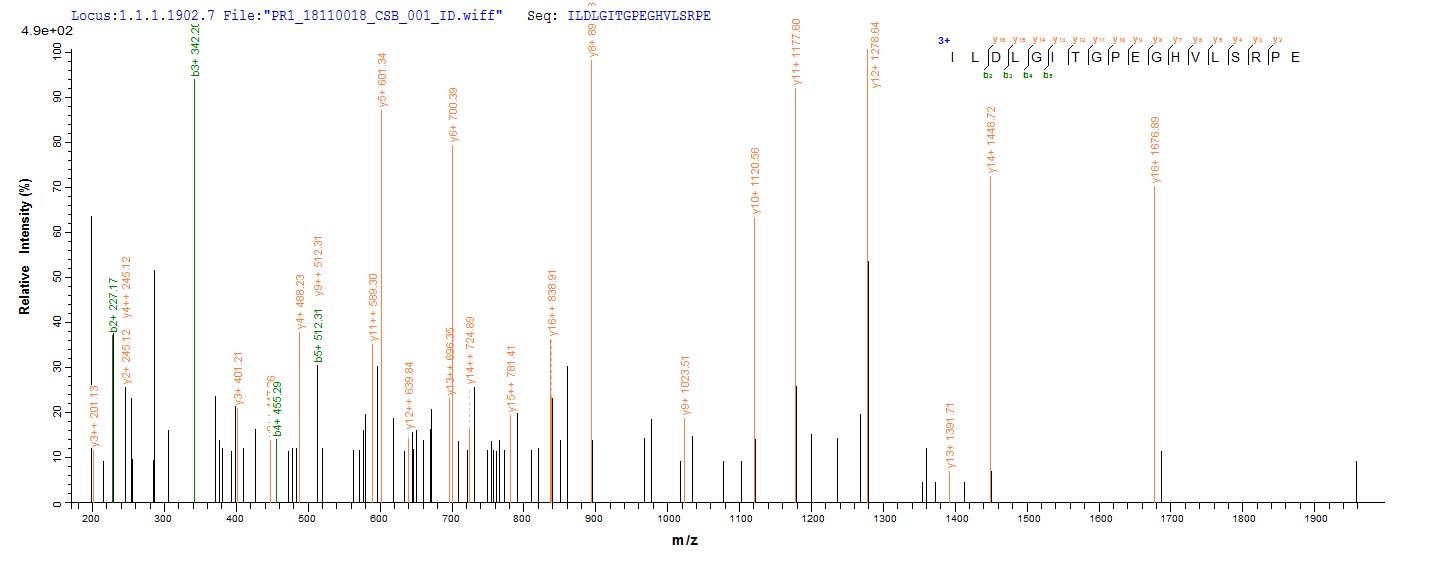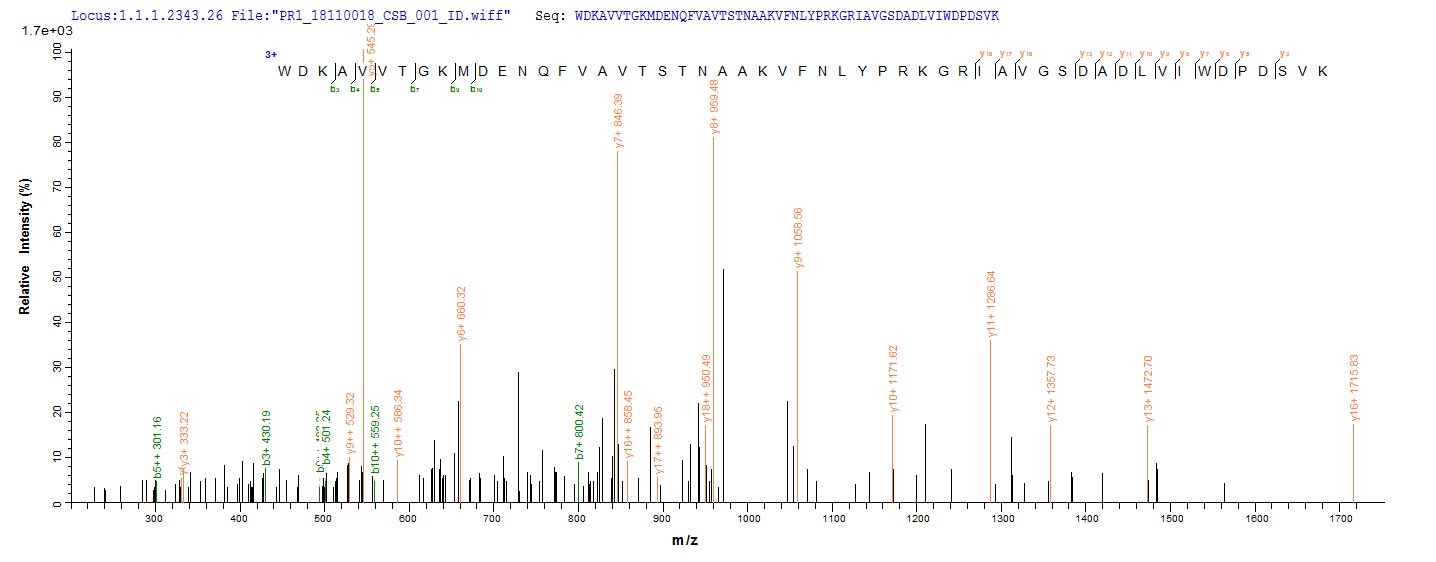An entire Dihydropyrimidinase-related protein 2 (DPYSL2) ORF inserted a 6xHis-tag at the N-terminus was expressed in the yeast cells. The generated protein is the recombinant full-length fusion DPYSL2 containing 1-572aa of human DPYSL2. The SDS-PAGE analysis measured its purity up to 90%, and it has a calculated molecular mass of 64.3 kDa. It also underwent validation by the LC-MS/MS analysis. In-stock DPYSL2 proteins are offered now. This recombinant DPYSL2 protein may find uses in the production of anti-DPYSL2 antibodies or in the studies of developmental biology.
DPYSL2, also called CRMP2, is a cytosolic protein belonging to the five-gene family known for its implication in axonal growth cone collapse. DPYSL2 mediates axonal outgrowth in the developing brain by enhancing microtubule assembly, vesicle trafficking, and synaptic physiology. DPYSL2 interacting with other proteins stabilizes microtubules, facilitates neurite outgrowth, and regulates signaling processes in the central nervous system (CNS). The ablation of DPYSL2 may lead to neurodevelopmental disorders including unregulated axon growth and branching, which suggests that DPYSL2 plays a crucial role in the pathogenesis of schizophrenia. Liu-Lin Xiong etc. demonstrated that an increase of DPYSL2 expression promotes neural stem cells (NSCs) differentiates into neurons.








